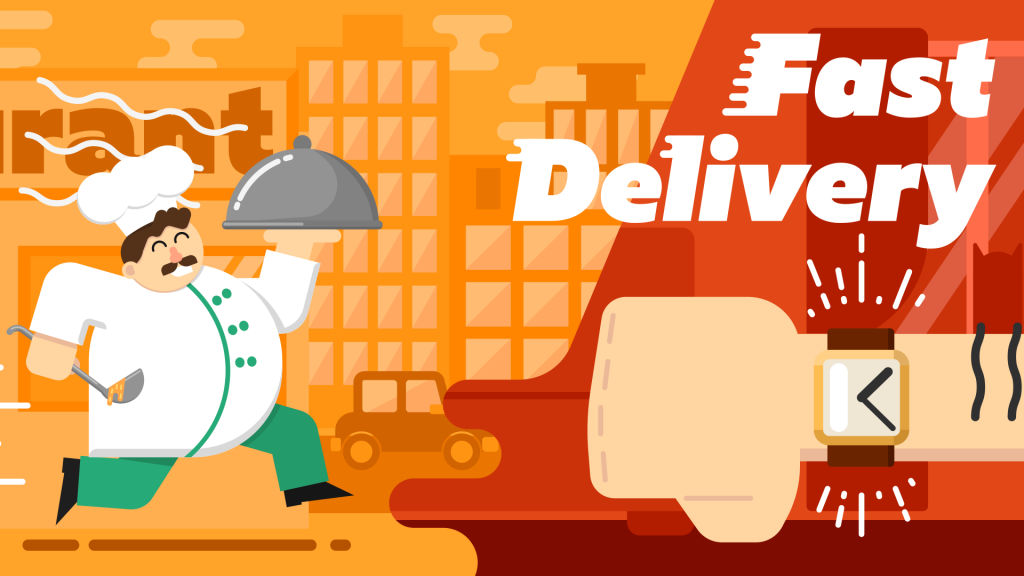 Phil comes home from a hard day’s work. He changes into his comfy clothes, checks his Facebook, then feels the sharp pain of hunger. He strolls over to the fridge and opens it, looking for his next meal. He’s disappointed. All that is in his fridge are a few frozen meals, some slightly mushy fruit, leftovers from who knows when, and some beverages. Not enough to satisfy his hunger.
Phil comes home from a hard day’s work. He changes into his comfy clothes, checks his Facebook, then feels the sharp pain of hunger. He strolls over to the fridge and opens it, looking for his next meal. He’s disappointed. All that is in his fridge are a few frozen meals, some slightly mushy fruit, leftovers from who knows when, and some beverages. Not enough to satisfy his hunger.
So, Phil decides to order out, but what are his options? Pizza, Chinese, sandwiches, and that’s about it. What he really wants is a burrito. But, he’s already in his pajamas and doesn’t want to venture out in public. So, instead, he settles for something deliverable and eats it in the comfort of his home.
People everywhere are like Phil. Sometimes they just want to eat a nice burrito, steak, pasta, or lobster meal while watching Netflix and relaxing. The demand for delivery is higher than ever, and your restaurant should provide it. Then, you need to market your delivery services, so everybody knows you have it.
Creating a Plan for Delivery
If your restaurant doesn’t already offer delivery, it’s time to look at the possibility. Whether you serve the fastest of foods or the fanciest of meals, look for ways to deliver your food.
A good place to start is gauge interest in delivery options. If you have a good following on social media, or a healthy email list, send out a survey. Give your customers the chance to tell you what they want. Find out where people interested in delivery live. That way, you can see if you would have enough demand within a reasonable delivery radius.
Then, figure out how you would do delivery. Would you hire your own delivery employees or partner with a third-party delivery company, like GrubHub or UberEats? Having your own employees means pocketing more of the money, but also requires you to have enough demand to pay for the delivery employee. Then, if you choose to hire employees, do you have them use their own vehicles, or get a company car — maybe one with a built-in heating tool to keep the food warm?
Launching Your Service
So you figured out all of the details of your delivery service; now it’s time to launch it. You’ll want to make sure to get the word out to everybody you can and push to have a strong start. The more people who experience your delivery and find it useful, the more long-term customers you’ll create.
So throw a massive event around the launch of your delivery service. Shout it from the rooftops that your restaurant is offering delivery. Put a massive banner at the top of your website. Pay for ad space in your local community. Have commercials on local radio and TV stations. Post about it on social media. Go big announcing it to everybody you can.
It might even be worth giving customers extra deals when ordering online during the launch week or month. Have discounts on your most popular items, offer free delivery, or do some sort of sweepstakes for people who use your delivery service.
Targeting Why They Are Ordering
People order delivery for different reasons, such as: looking to feed a massive party, having a hassle-free family dinner, needing a quick lunch, or just wanting to eat delicious food in their pajamas while watching Netflix.
After that initial launch time where you are shooting to get everybody to try your delivery service, look at the data you’ve received. That includes order size, what time of day orders are made and delivered, where the food was delivered, and how often people order.
From that information, alongside your website’s data, you can piece together your delivery target markets. Maybe your food isn’t very viable for large parties like pizza is, so it wouldn’t make sense to target that market. On the flip side, maybe a lot of people are ordering singular meals at odd hours, meaning that maybe you have a strong market for people who like to eat your food alone in the comfort of their home. Do market research to identify ideal and new customers.
Once you’ve created an understanding of who is using your service, you start planning your marketing around that market. Finding that a lot of people order massive amounts of food for parties on Friday nights? Have promotions and advertising about using your delivery service to throw a great event.
Find pain points that your market has and hit them hard. Tell them you are the best option to solving their food-related problem with delivery. Utilize the newest and best marketing tactics to get your message across.
Keeping Long-Term Customers
Just like with customers who eat inside your restaurant, part of keeping long-time customers with your delivery business is your service. One bad experience and they will never come back. One batch of cold food, one rude delivery man, one wrong order — if anything goes wrong, people won’t risk delivery again.
A big part of the delivery experience is what to expect if something does go wrong. A prime example of this are the days when pizza companies had the “Delivered in 30 minutes or it’s free” promise. This is typically no longer the case, but that big marketing push gave customers a feeling that, no matter the result, they win by ordering delivery. Either they get their food extremely quickly or they get it for free.
While you don’t need to copy the “delivered in 30 minutes or it’s free” model, you need to do something to impress. A good example to look at is Jimmy Johns. A major portion of their delivery business is that they have “freaky fast delivery.” Find something comparable to your business that will leave customers satisfied from ordering delivery.
Keeping your delivery service profitable is to include it in your marketing permanently. It’s not enough to simply have the option on your site. Keep people informed that you offer delivery for their convenience. Doing that will lead to long-term success and constantly creating returning customers.






